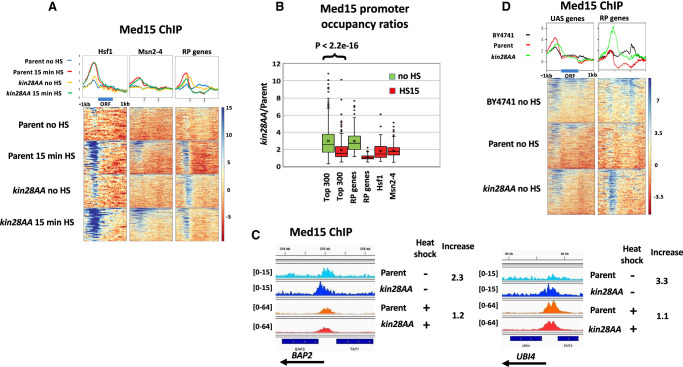Figure 1.
Effect of heat shock on Mediator association. (A) Heat maps and line graphs depicting normalized occupancy of the Mediator tail module subunit, Med15, in kin28AA yeast treated with rapamycin and the parent strain YFR1321, also treated with rapamycin, before and after 15 min of heat shock, at 42 Hsf1 targets and 213 Msn2-4 targets and 137 RP genes (see Methods; Supplemental Table S2). (B) Box and whisker plots showing the ratios of Med15 occupancy with and without Kin28 depletion for the approximately 300 genes showing the highest Med15 occupancy in Kin28-depleted cells without or with heat shock; ratios are also shown for RP genes, Hsf1 targets, and Msn2-4 targets in heat-shocked cells. (C) Browser scans showing Med15 occupancy upstream of BAP2 and UBI4 in kin28AA yeast and the parent strain YFR1321, both treated with rapamycin, with and without heat shock. UBI4 is a target of Hsf1, whereas BAP2 is not a target of Hsf1 or Msn2-4. Scale, in reads per million mapped reads, is indicated for each scan. (D) Heat maps and line graphs depicting occupancy of the Mediator tail module subunit, Med15, in BY4741 yeast, kin28AA yeast treated with rapamycin, and the parent strain YFR1321, also treated with rapamycin, in the absence of heat shock, at “UAS genes” (see text and Supplemental Table S2) and RP genes.

